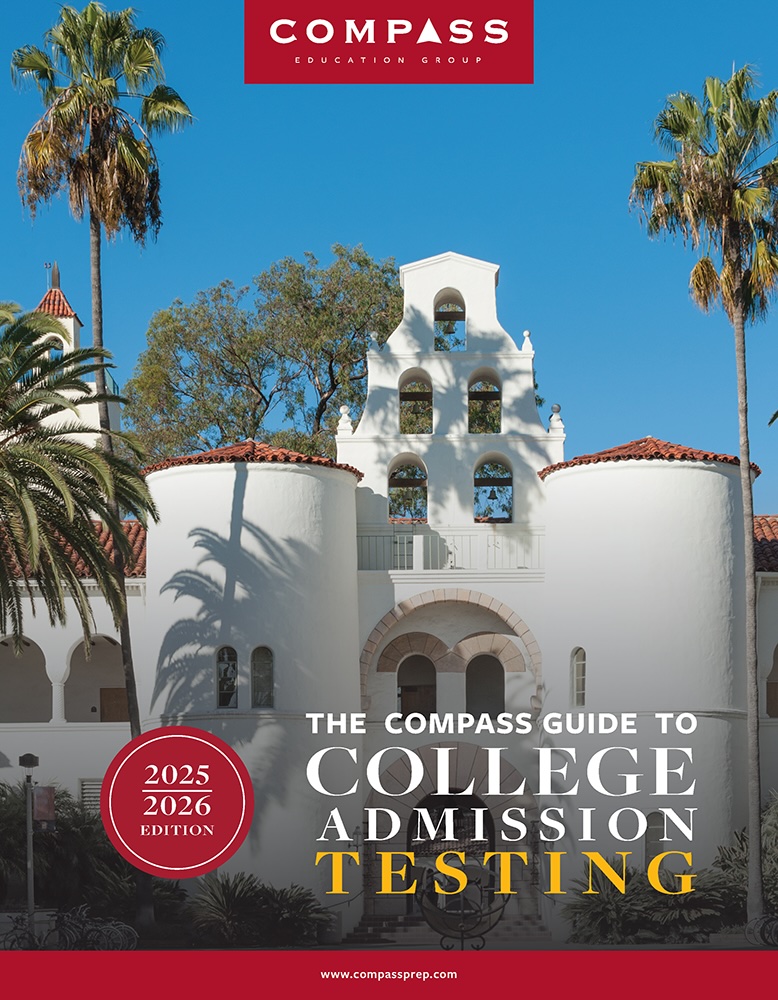
The first choice students need to make is whether to prepare for the SAT or ACT. Both tests are equally accepted for college admission and either can be an excellent option. However, recent changes may make it challenging to determine which test is your test. Here we compare the basic content, timing, and structure of the SAT and ACT to help better inform your decision. Below, you’ll find side-by-side tables for easy comparisons, as well as a PDF of this resource.
SAT Overview
The SAT is a digital and adaptive test. It begins with two sets, or stages, of reading and writing questions that take just over an hour. After a break, the test continues on to two math stages for 70 minutes. The relative difficulty of the second stage of each subject depends on the student’s performance on the first stage. The total score is the sum of the reading and writing score and the math score.
ACT Overview
The ACT is offered as either a paper-and-pencil or online test. It is made up of tests in English, math, and reading, along with optional science and writing tests. The composite score is the average of the English, math, and reading scores. Science and writing are presented as separate scores. Compass generally advises students to take the science test but not the writing test.
Although many students score comparably on the competing exams, some students perform better on the ACT (as some do on the SAT) and find it to their advantage to submit the comparatively higher scores with their applications.
SAT vs. ACT Overview
| SAT | ACT | |
|---|---|---|
| Format | Digital only via Bluebook app | Paper-and-Pencil or Online via ACT Gateway App |
| Supported Computers | Bring Your Own Device: Windows laptop or tablet, Mac laptop, iPad, or school-managed Chromebook | (1) Test Center Computer, or (2) Bring Your Own Device: Windows, Chromebook (personal or school-managed), or Macbook computers (no iPads) |
| Timing | 2 hours and 24 minutes (includes 10-minute break) | 2 hours and 20 minutes (includes 15-minute break) 3 hours with science 3 hours and 40 minutes with science and writing |
| Structure | Stage Adaptive: The difficulty of a section's second stage is based on performance in the first stage; the test tailors the second stage to the student. | Static: The test does not change based on a student's performance, regardless of whether the test is administered on paper or online. |
| Sections | 2 Sections, Each with 2 Stages – Reading and Writing Stage 1 (32 min, 27 questions) – Reading and Writing Stage 2 (32 min, 27 questions) – Break (10 min) – Math Stage 1 (35 min, 22 questions) – Math Stage 2 (35 min, 22 questions) | 3 Required Tests, 2 Optional Tests – English (35 min, 50 questions) – Math (50 min, 45 questions) – Break (15 min) – Reading (40 min, 36 questions) – Optional Science (40 min, 40 questions) – Optional Essay (40 min, 1 prompt) |
| Test Scores | 400-1600 Total Score: 200-800 Reading and Writing | 200-800 Math The existing SAT-ACT Concordance continues to be used despite changes to the SAT and ACT. | 1-36 Composite Score (rounded average of English, math, and reading scores) 1-36 each test: English, Math, Reading, and Science; 2-12 Writing test |
| Other Scores | No subscores or cross-test scores | STEM score is presented as the rounded average of math and science scores when both are taken. ELA score is presented as the rounded average of English, reading, and writing when all tests are taken. |
| Unscored Questions | Both the Reading and Writing and the Math tests include 4 unscored questions mixed in with the scored questions. | Each section includes unscored questions mixed in with the scored questions: English - 10 unscored Math - 4 unscored Reading - 9 unscored Science - 6 unscored |
| Accommodations | All timing accommodations are available. Students whose accommodations require a paper test are able to take a paper-and-pencil test. | All timing accommodations are available. For information on how to request testing accommodations, read our accommodations blog post. |
| Score Reports | Available days after the exam. Students do not have access to their questions and answers. | Available 2 weeks after the exam. Students can order My Answer Key to receive a digital copy of the multiple-choice test questions for certain administrations. |
| Security | Students have unique tests—an algorithm builds question sets out of a large pool of questions tagged based on qualities ranging from content area to difficulty. | A limited number of form codes are used each administration. Students sign an agreement to keep test questions confidential and are prohibited from using recording devices. |
SAT Reading & Writing vs. ACT Reading & English
| SAT | ACT | |
|---|---|---|
| Timing | 64 minutes, evenly divided between 2 stages | English: 35 minutes Reading: 40 minutes |
| Passage Format | 54 passage & question sets One short reading passage (25-150 words) per question | English: 6–7 passage with 5 or 10 questions each Reading: 4 long passages with 9 questions each |
| Reading Organization | Reading questions are in the first half of each stage and are organized by domain and then question type: 1. Craft and Structure (Words in Context, Text Structure and Purpose, Cross-Text Connections) 2. Info and Ideas (Central Ideas and Details, Command of Evidence, Inferences) | The four passages are broken into two types: literary narrative and informational. |
| Reading Question Organization | Difficulty increases within each question type | Random |
| Writing/English Organization | Writing questions are presented in the second half of each Reading and Writing stage and are organized by domain and then question type: 1. Standard English Conventions 2. Expression of Ideas (Rhetorical Synthesis, Transitions) | The passages are written to appear like typical high-school level writing Topics range from history reports to personal narrative |
| Writing/English Question Organization | Difficulty increases within each question type | Chronological |
SAT Math vs. ACT Math & Science
| SAT | ACT | |
|---|---|---|
| Math Timing | 70 minutes, evenly divided between 2 stages | 50 minutes |
| Math Format | 44 questions (including about 11 student-produced response questions) | 45 questions |
| Math Content Areas | Math content has not changed from the paper SAT but domains have been renamed: 1. Algebra 2. Advanced Math 3. Problem Solving and Data Analysis 4. Geometry and Trigonometry | ACT organizes questions into 3 overlapping areas and 5 question types 1. Preparing for Higher Math: Number & Quantity, Algebra, Functions, Geometry, and Statistics and Probability 2. Integrating Essential Skills 3. Statistics & Probability |
| Math Question Organization | Difficulty increases within each stage | Difficulty increases within the section |
| Calculator Use | Approved calculators or the testing application's built-in calculator can be used on all math questions. | Approved calculators can be used on the Math Test only. A built-in calculator may be available for students taking the online ACT. |
| Science | Reading and math questions ask students to interpret graphs and data tables. | 40-minute section: 7 passages with graphs, diagrams, or tables and 40 questions |


